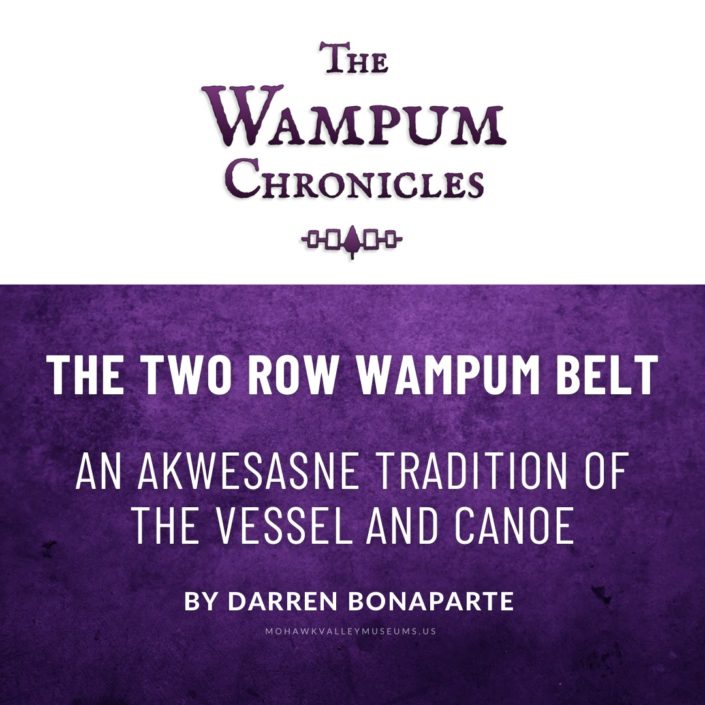
Nia:wen ko:wa, Tehanetorens
Akwesasne Remembers Ray Fadden
(Originally published in Indian Country Today, December 26, 2008.)
Written by Darren Bonaparte
In modern Ahkwesáhsne, we sometimes take our unique history and culture for granted, as if we have always had the flag of the Iroquois Confederacy flying proudly over our public buildings, and emblazoned in the logos of just about every organization. It is not uncommon to hear a small child reciting Ohén:ton Karihwatéhkwen, the Words Before All Else, in fluent Mohawk before a public gathering, which might lead one to suspect that this has always been the case.
The strength of our cultural identity has been the result of a long and tireless struggle
In reality, the strength of our cultural identity has been the result of a long and tireless struggle, sometimes against great odds, as the forces of assimilation have been relentless in suppressing the “old ways” of our ancestors in favor of an American or Canadian paradigm. In fact, the fire of Mohawk nationhood has at times come close to being extinguished for good, were it not for the efforts of key people along the way who came along with the right kind of kindling.
The best example of that would be Ray Fadden, who came to Ahkwesáhsne in the late 1930s to be one of the first teachers at the St. Regis Mohawk School in Hogansburg. Ray grew up in the Adirondack Mountains. He was passionate about his love for all things Indian, being part Mohawk himself, and spent many years learning all he could about our culture and history both from books and from elders he met throughout the Iroquois Confederacy.
Arrival at Ahkwesáhsne
His arrival at Ahkwesáhsne coincided with one of the periodic revivals that stir up from time to time. Some 30 chiefs of the Haudenosaunee Confederacy and their non-native supporters came to Ahkwesáhsne to participate in a big gathering. According to a local newspaper, “The old constitution of the League of the Iroquois would serve as a splendid document for a world peace plan of today which would unite all English speaking people, according to Charles Davis, England, who spoke at the colorful conclave of the Six Nations at Hogansburg yesterday afternoon.”
The same paper, the Massena Observer, covered the opening of the St. Regis Mohawk School. Ray Fadden’s enthusiasm caught their attention, and two months later they wrote an article about him. “Ray Fadden, Sixth Grade teacher in St. Regis-Mohawk School, Hogansburg, is the proud possessor of an Indian collection which would be much appreciated by any reputable museum.”
Ray’s collection included more than 50 wampum belt reproductions, 100-year-old Chippewa leggings, a moose hide jacket made by Maniwaki Indians of Hudson Bay, moccasins made by Sitting Bull’s niece, buffalo horns picked up on the plains some 70 years earlier, stone axes and arrowheads of the mound builders of Ohio, French trade beads found near Oneida Lake, a tomahawk from the French and Indian War, a carved spoon and beaded belt from the Amazon Indians of South America, and many other amazing items too numerous to mention. “Everyone who saw the exhibit and who heard Mr. Fadden’s comments, displayed an intense and enthusiastic interest,” according to the article.
Ray went on to publish a series of articles in the newspaper that detailed the many contributions the North American Indian had made to modern civilization, ranging from technological innovations to foodstuffs and even democratic traditions. This was unprecedented in a time when the outside world viewed the Indian as little more than a Stone Age savage who must abandon his culture if he is to survive in the modern world. Ray fought against this negative characterization by mobilizing his students as the “Akwesasne Mohawk Counselor Organization,” a club that traveled all over the Northeast visiting Indian historic sites, camping out, learning as much as they could about Indian craft and lore, and then turning around and sharing what they learned with the children they encountered. Ray also published numerous pamphlets and posters about Indian culture that are still in print today.
The energy and enthusiasm of this whirlwind was contagious. The Mohawk people picked up his mantle and went on to establish Akwesasne Notes, the White Roots of Peace, the North American Indian Traveling College, the Akwesasne Museum, the Akwesasne Freedom School, CKON Radio, and other community-driven efforts, all motivated by a passionate pride in our traditional way of life that Ray Fadden helped to foster.
Many years ago, the Mohawk Nation adopted him into the Mohawk wolf clan and gave him the name Tehanetorens, which has been translated as “He Walks through the Pines.”
Rarely does one embody their name as completely as Tehanoterens, because that was where he truly felt at home, in the beautiful Adirondacks. After retiring as a school teacher, he established the Six Nations Indian Museum in Onchiota where he continued to educate anyone who would listen about the amazing heritage of the Haudenosaunee people. With his wife, son, daughter-in-law, and grandchildren by his side, Ray became something of a living legend in the Adirondacks, an environmentalist long before such a thing was “cool.” He spent his golden years doing what he loved most, feeding the many birds and animals that shared the mountains with him, and occasionally entertaining visitors to the museum with stories about the Iroquois.
Some years ago, Tehanetorens became a resident of Iakhihsohtha, a nursing home at Ahkwesáhsne, where he passed away on Nov. 14. Although his funeral would have filled the Ahkwesáhsne longhouse with appreciative people from all over Indian country, it was his wish to have a simple, private ceremony with little fanfare, attended only by close friends and family. This was typical of Tehanetorens, whose passion for Indian culture was matched by his humble nature. He wanted no tributes or memorials. If anything, he would want us to honor his memory by adding another log to the fire of Mohawk nationhood, and to continue to raise our children with an appreciation and pride in our distinct cultural heritage. This we will do, but we will never forget the awesome debt we owe this amazing man.
Nia:wen ko:wa – thank you – Tehanetorens.
By Darren Bonaparte, historian and author of The Wampum Chronicles. Reprinted with permission.
Darren Bonaparte is a cultural historian from the Akwesasne First Nation. He is a frequent lecturer at schools, universities, museums, and historical sites in the United States and Canada. He has written four books, several articles, and the libretto for the McGill Chamber Orchestra’s Aboriginal Visions and Voices. Darren is a former chief of the Mohawk Council of Akwesasne. He is the creator of The Wampum Chronicles and historical advisor to film and television. He currently serves as the Director of the Tribal Historic Preservation Office of the Saint Regis Mohawk Tribe.














 Detroit Publishing Co., Copyright Claimant, and Publisher Detroit Publishing Co. Old Heidelberg. Photograph. Retrieved from the Library of Congress,
Detroit Publishing Co., Copyright Claimant, and Publisher Detroit Publishing Co. Old Heidelberg. Photograph. Retrieved from the Library of Congress,